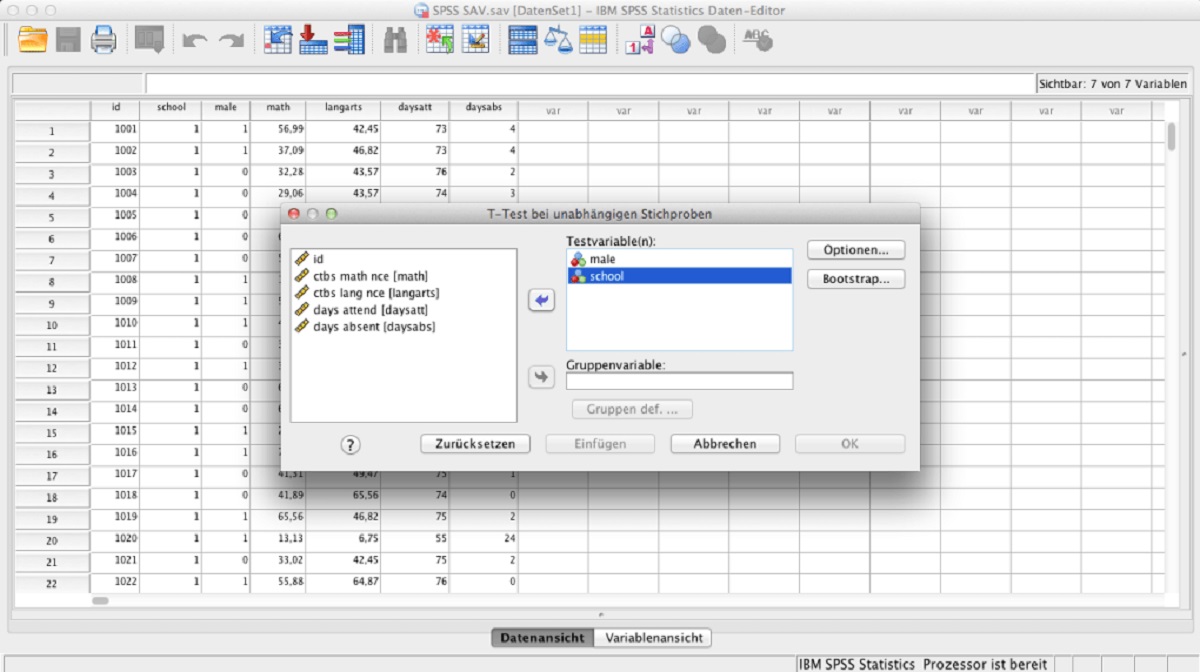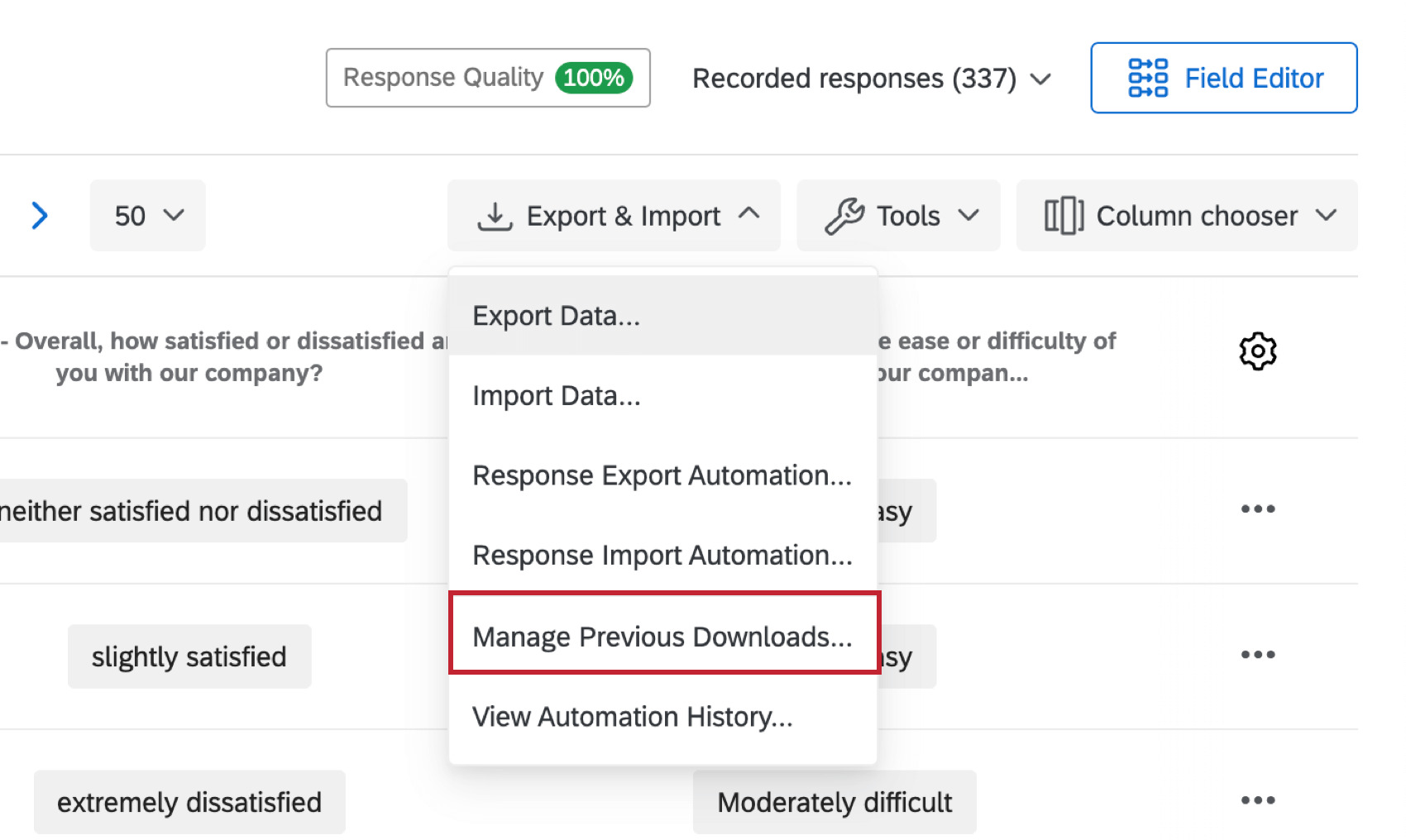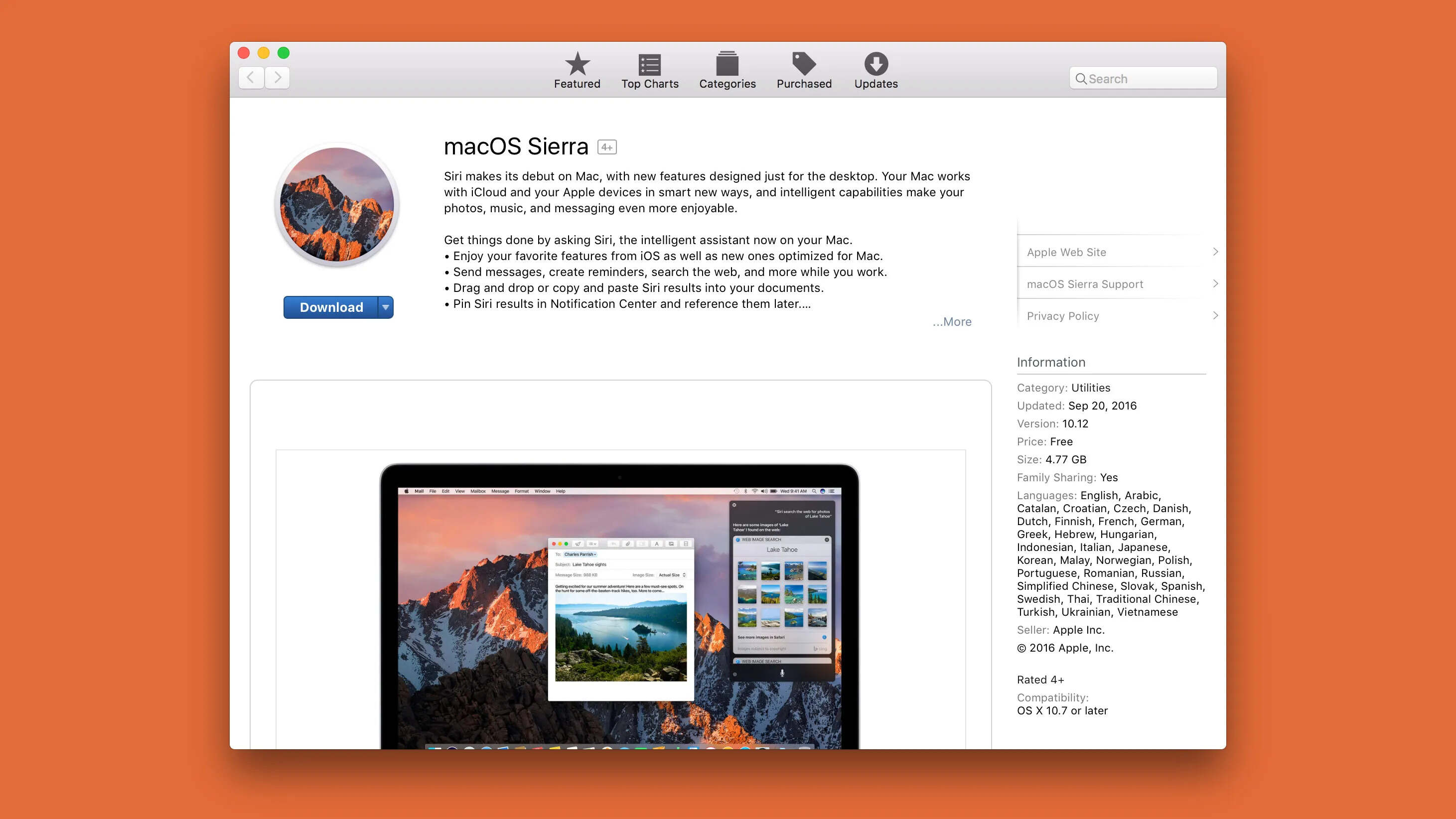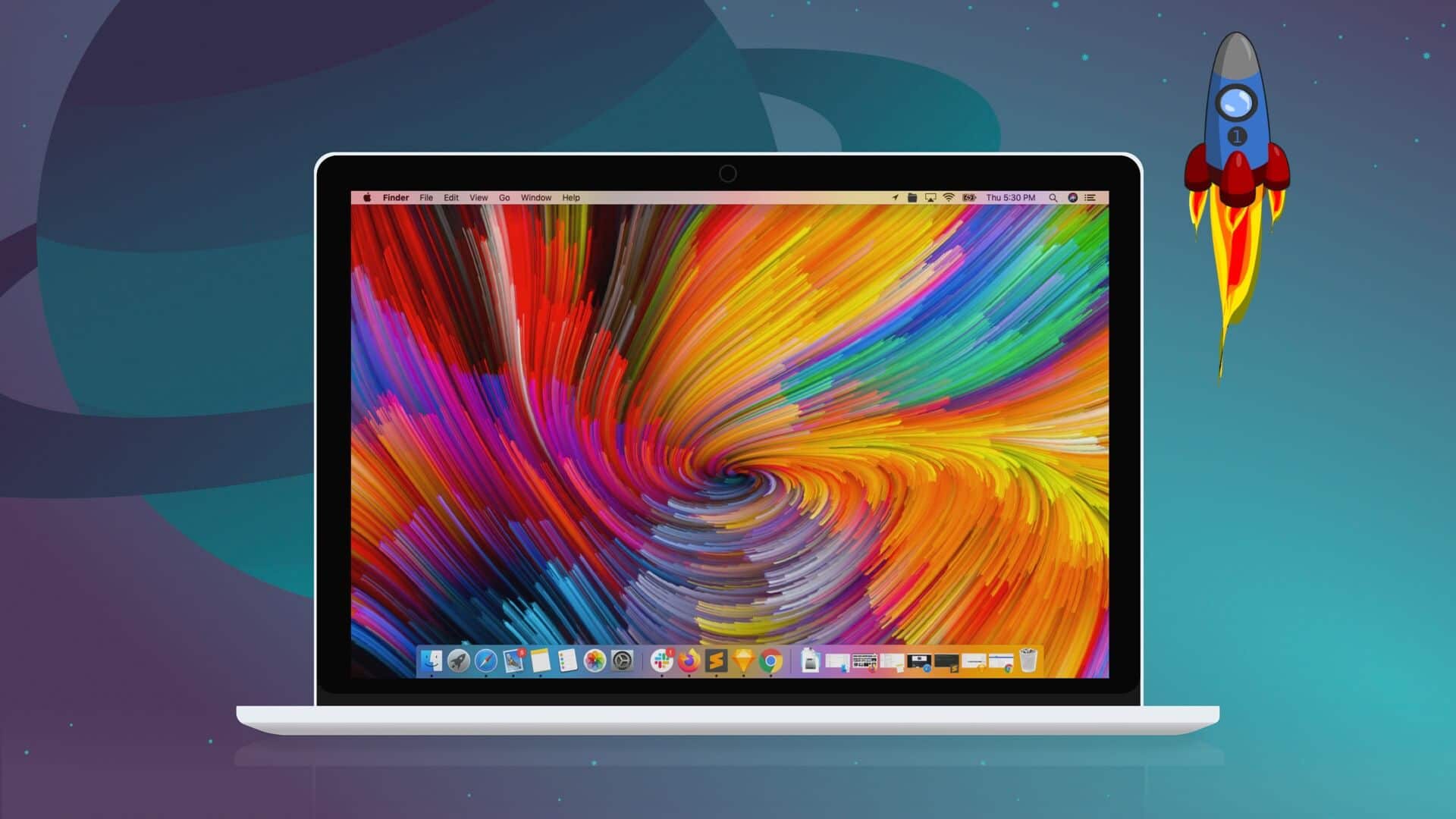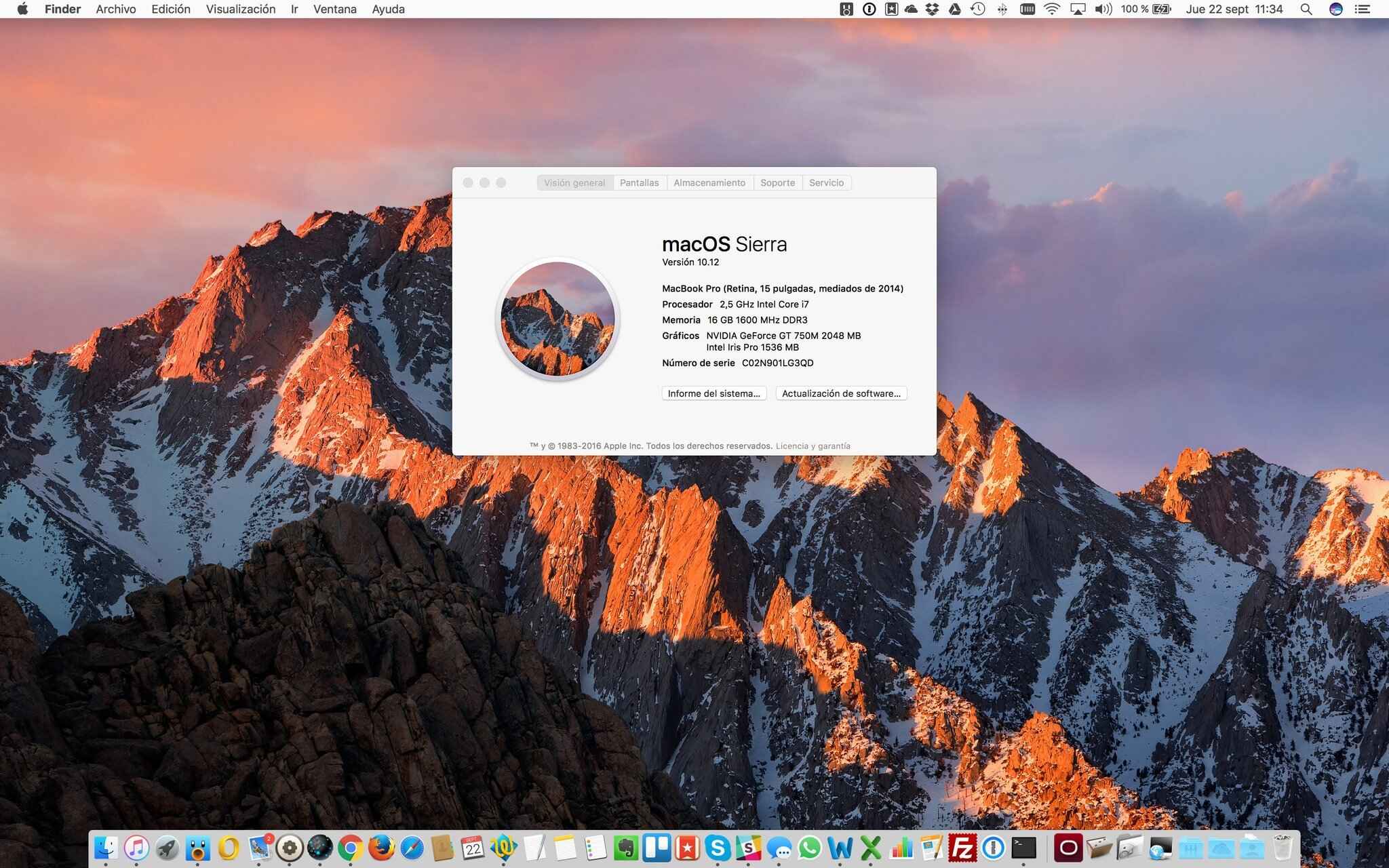Introduction
Welcome to the world of data analysis and statistical software! SPSS (Statistical Package for the Social Sciences) is a powerful tool that is widely used by researchers and analysts to analyze data and make informed decisions. If you are a Mac user who is eager to get started with SPSS, you’ve come to the right place.
In this step-by-step guide, we will walk you through the process of downloading and installing SPSS on your Mac. Whether you’re a student working on a research project or a professional in need of advanced statistical analysis, having SPSS on your Mac will provide valuable insights and streamline your data analysis workflow.
Before we dive into the steps, it’s important to note that SPSS is a paid software. However, IBM offers a free trial for those who want to try it out before making a purchase. Additionally, universities and academic institutions often provide access to SPSS for students and faculty members.
Now, let’s get started. Follow the steps below to download and install SPSS on your Mac and unlock its full potential.
Step 1: Visit the IBM website
The first step to download SPSS on your Mac is to visit the official IBM website. Open your preferred web browser and enter “www.ibm.com” in the address bar. Once the homepage loads, you’re ready to move on to the next step.
IBM is the official provider of SPSS software, and visiting their website ensures that you are accessing the most up-to-date and legitimate version of the software.
Upon visiting the IBM website, you will notice that it offers various products and services. To specifically access SPSS, you can use the search bar located at the top of the page. Simply type in “SPSS” or “Statistical Package for the Social Sciences”, and the relevant results will appear.
Alternatively, you can navigate through the website by clicking on the “Products” or “Solutions” tab and then selecting the “Analytics” or “Data and AI” category. Look for the SPSS software among the available options.
It’s important to note that the website layout may vary over time, so be sure to adapt the steps accordingly if any changes have been made to the IBM website.
Once you have successfully located the SPSS software page on the IBM website, you are ready to proceed to the next step. This page will provide you with detailed information about SPSS, including its features, pricing options, and additional resources to help you make an informed decision about the software.
Now that you’ve reached the SPSS software page on the IBM website, it’s time to move on to Step 2: signing in or creating an IBM account.
Step 2: Sign in or create an IBM account
In order to proceed with downloading SPSS from the IBM website, you’ll need to sign in or create an IBM account. This account is necessary to access and manage your software licenses, download files, and receive updates and support.
If you already have an IBM account, simply click on the “Sign In” button located at the top right corner of the website. Enter your credentials – typically your email address and password – to log in to your existing account.
If you don’t have an IBM account, you’ll need to create one. To do this, click on the “Sign In” button mentioned earlier, and then look for the “Create an account” or “Register” option. Click on it, and you’ll be directed to a registration page.
On the registration page, you’ll be asked to provide certain information such as your name, email address, and password. Fill in the required fields, and make sure to choose a strong and unique password to protect your account.
After submitting the registration form, you may be required to verify your email address by clicking on a confirmation link sent to your inbox. Follow the instructions provided in the email to complete the verification process.
Once you have successfully signed in to your existing IBM account or created a new one, you will have access to the full range of features and functionalities offered by IBM, including downloading SPSS.
Keep in mind that having an IBM account also enables you to explore other IBM products and services, and it may be useful for future endeavors. Now that you’ve signed in or created an IBM account, you’re ready to proceed to the next step: locating the SPSS software on the IBM website.
Step 3: Locate the SPSS software
Once you have signed in or created an IBM account, it’s time to locate the SPSS software on the IBM website. To do this, you can use the search functionality on the website or navigate through the relevant categories.
If you’re using the search bar, simply type in “SPSS” or “Statistical Package for the Social Sciences,” and the search results will display the relevant SPSS software options. Click on the most relevant one to access its dedicated page.
If you prefer navigating through the categories, look for the “Products” or “Solutions” tab on the IBM website. From there, navigate to the “Analytics” or “Data and AI” category, where you should find the SPSS software listed among the available options.
Since the website layout may change over time, it’s important to adapt these steps if any modifications have been made to the IBM website.
Once you’ve found the SPSS software page, take a moment to explore the information provided. Here, you’ll find details about the different versions and editions of SPSS, pricing options, and additional resources that can help you determine the best fit for your needs.
It’s worth noting that SPSS offers various versions tailored to different use cases, such as SPSS Statistics and SPSS Modeler. Consider your specific requirements and select the version that aligns with your goals.
On the SPSS software page, you may also find customer reviews, case studies, and FAQs that can provide insights into how others have benefited from using SPSS.
Once you’ve familiarized yourself with the available options and gathered the necessary information, you’re ready to proceed to the next step: choosing the SPSS version specifically designed for Mac.
Step 4: Choose the SPSS version for Mac
Now that you’ve located the SPSS software page on the IBM website, it’s time to select the version specifically designed for Mac. SPSS offers versions for different operating systems, including Windows and Mac.
On the SPSS software page, look for the options or dropdown menus that allow you to select your desired operating system. Choose “Mac” or “Mac OS” to filter the available options and display the SPSS versions compatible with your Mac computer.
It’s important to choose the correct version, as installing an incompatible version can lead to installation issues or software malfunction.
Take a moment to review the different SPSS versions available for Mac. Consider factors such as your specific needs, budget, and the features offered by each version. This will help you make an informed decision and select the version that best suits your requirements.
Keep in mind that there may be different editions or licensing options within each SPSS version. Take a closer look at these options and choose the one that aligns with your intended use and budget constraints.
If you’re unsure which version to choose or have any questions, you can refer to the FAQ section on the SPSS software page or explore the additional resources provided. These resources often include documentation, user guides, and forums where you can find answers to common queries.
By carefully selecting the appropriate SPSS version for Mac, you can ensure a seamless installation and optimal performance of the software on your computer. Once you have made your decision, you’re ready to proceed to the next step: selecting the correct language and package type.
Step 5: Select the correct language and package type
After choosing the appropriate SPSS version for Mac, it’s time to select the correct language and package type. These options ensure that you download the specific version of SPSS that best caters to your language preference and package requirements.
On the SPSS software page, you will typically find a dropdown menu or options that allow you to choose your preferred language. This language selection determines the language in which the SPSS software interface will be displayed.
Choose the language that you are most comfortable with or the one that aligns with the requirements of your research or analysis projects. Common languages available for SPSS include English, Spanish, French, German, and many more.
In addition to language selection, you may also have the option to choose the package type. SPSS offers different packages that cater to specific needs, such as academic editions for students and faculty, commercial editions for businesses, and trial versions for those who want to explore SPSS before making a purchase.
Consider your requirements and select the package type that suits your situation. If you are a student or researcher working on an academic project, the academic edition may be the most suitable choice. If you are using SPSS for business purposes, consider the commercial edition that offers additional features and support tailored to enterprise settings.
Make sure to read the descriptions and details provided for each package type to understand the differences and make an informed decision.
By selecting the correct language and package type, you ensure that the downloaded SPSS software meets your specific needs and preferences. Once you have made these selections, you’re ready to move on to the next step: reviewing the system requirements.
Step 6: Review the system requirements
Before proceeding with the download and installation of SPSS on your Mac, it is crucial to review the system requirements to ensure compatibility and optimal performance.
The system requirements outline the minimum hardware and software specifications necessary to run SPSS effectively. Failing to meet these requirements may result in installation issues, software crashes, or performance issues.
To access the system requirements for SPSS, navigate to the SPSS software page on the IBM website. Look for a section or link that provides detailed information about the system requirements.
Typically, the system requirements include specifications such as the operating system version, processor type and speed, RAM (Random Access Memory) capacity, available hard disk space, and any additional software prerequisites.
Ensure that your Mac meets or exceeds the minimum system requirements specified by IBM. This will ensure a smooth installation process and optimal performance of SPSS.
If your Mac does not meet the minimum requirements, consider upgrading your hardware or operating system before proceeding. Running SPSS on unsupported systems can result in errors, limited functionality, and overall dissatisfaction with the software.
It’s important to note that updating your operating system and hardware may have additional costs, and it’s crucial to factor them into your decision-making process.
By reviewing and ensuring that your Mac meets the system requirements, you can confidently move on to the next step: adding the SPSS software to your cart and initiating the download process.
Step 7: Add the software to your cart
Now that you have reviewed the system requirements and confirmed compatibility with your Mac, it’s time to add the SPSS software to your cart. Adding the software to your cart will enable you to proceed with the checkout process and initiate the download.
On the SPSS software page, look for a button or link that allows you to add the software to your cart. This button is typically labeled as “Add to Cart” or “Buy Now”. Click on it to add the SPSS software to your virtual shopping cart.
Once you have added the software to your cart, you may be redirected to a new page or a pop-up window where you can review the contents of your cart. This page will typically display information about the SPSS version, language, and package type you have selected, along with the total price and any applicable discounts.
Take a moment to verify that all the details in your cart are correct before proceeding. If you need to make any changes, look for options to edit or remove items from your cart.
Some websites may also provide additional recommendations or related products that you may find useful. Consider browsing through these suggestions to explore other offerings that could enhance your SPSS experience.
Once you are satisfied with the contents of your cart, you can proceed to the next step: reviewing and accepting the license agreement.
Adding the SPSS software to your cart is an important step as it signals your intention to make a purchase and allows you to proceed with the checkout process. Ensure that you have selected the correct version and package type before moving forward.
Step 8: Review and accept the license agreement
As you proceed with the checkout process for the SPSS software, it is crucial to review and accept the license agreement. The license agreement outlines the terms and conditions that govern your usage of the software and ensures compliance with copyright laws and intellectual property rights.
After adding the SPSS software to your cart, you will typically be prompted to review and accept the license agreement before proceeding with the purchase. Look for a link or button that allows you to view the license agreement.
Take the time to thoroughly read the license agreement to understand your rights and limitations as the user of the SPSS software. The license agreement will specify important details such as the permitted usage, restrictions, and any additional terms specific to the version or package type you have selected.
Ensure that you fully comprehend the terms and conditions outlined in the license agreement. If you have any questions or concerns, consult the customer support resources provided by IBM or seek legal advice if necessary.
Once you have carefully reviewed the license agreement and are comfortable with its terms, you will typically be required to accept it before proceeding with the purchase. This demonstrates your agreement to abide by the terms specified in the license agreement.
Click on the appropriate button or checkbox provided to indicate your acceptance of the license agreement. Some websites may require you to electronically sign or tick a box to confirm your consent.
By reviewing and accepting the license agreement, you acknowledge and agree to the terms and conditions set forth by IBM for the use of the SPSS software. This ensures a legal and ethical usage of the software and protects both your rights as the user and IBM’s intellectual property.
With the license agreement accepted, you are now ready to proceed to the next step: downloading the SPSS software onto your Mac.
Step 9: Download the SPSS software
After reviewing and accepting the license agreement, you are now ready to download the SPSS software onto your Mac. The download process allows you to obtain the necessary installation files that will enable you to install and run SPSS on your computer.
Once you have completed the previous steps and finalized the purchase, you will typically be provided with a download link or button. Look for this option on the website or in the confirmation email you received after completing the checkout process.
Click on the download link to initiate the download process. This will prompt your web browser to start downloading the SPSS software files. The download time may vary depending on your internet connection speed and the size of the software package.
While the download is in progress, it is important to ensure a stable internet connection and refrain from interrupting or canceling the download. Doing so may result in corrupted files or incomplete downloads.
Once the download is completed, locate the downloaded file on your Mac. The file will typically be in a “.dmg” or “.exe” format, depending on your operating system.
Double-click on the downloaded file to begin the installation process. Follow the on-screen instructions provided by the installer to install SPSS on your Mac. The installation process may involve specifying the installation location, agreeing to additional terms and conditions, and configuring any optional settings.
It is recommended to carefully review each step of the installation process and make any required selections or adjustments according to your preferences and requirements.
After completing the installation, you will have successfully downloaded and installed the SPSS software onto your Mac. Congratulations! You are now ready to move on to the next step: launching SPSS and activating your license.
Ensure that you keep the downloaded installation file in a safe place. It may be useful in the future if you need to reinstall or update the software.
Step 10: Install SPSS on your Mac
Now that you have successfully downloaded the SPSS software files onto your Mac, it’s time to proceed with the installation process. Installing SPSS on your Mac will ensure that the software is properly set up and ready to use for data analysis and statistical purposes.
Locate the downloaded installation file, which is typically in a “.dmg” or “.exe” format, and double-click on it. This will open the installer and guide you through the installation steps.
Read the instructions provided by the installer carefully and follow the on-screen prompts to install SPSS on your Mac. The installation process may include selecting the installation location, agreeing to the terms and conditions, and configuring any additional settings or options.
Choose an appropriate installation location that has sufficient disk space and access permissions on your Mac. It is recommended to use the default installation options unless you have specific preferences or requirements.
During the installation process, you may also be prompted to enter your IBM account credentials or your SPSS license information. Provide the necessary details accurately to validate your license and activate the software. This process ensures that you are using a legitimate and authorized copy of SPSS.
Ensure that you have a stable power source and a reliable internet connection throughout the installation process. It may take some time to complete the installation, depending on the speed of your computer and the options you’ve selected.
Once the installation is complete, you will receive a notification or a confirmation message indicating the successful installation of SPSS on your Mac. At this point, you can proceed to the next step: launching SPSS and activating your license.
Remember to keep track of your SPSS license information, as you may need it for future reference or if you reinstall the software on a new computer.
Congratulations! You have successfully installed SPSS on your Mac and are now ready to utilize its powerful features for data analysis and statistical processing.
Step 11: Launch SPSS and activate your license
After successfully installing SPSS on your Mac, it’s time to launch the software and activate your license. Launching SPSS will allow you to access its comprehensive features and begin working on data analysis and statistical projects.
Locate the SPSS application on your Mac. Depending on how you installed SPSS, it may be available in the Applications folder or on your desktop.
Double-click on the SPSS application to launch it. The software may take a few moments to start up, so be patient during the loading process.
Once SPSS is launched, you will be prompted to activate your license. Enter the corresponding license information, which may include a license key or an authorization code, as provided during the installation or purchase process.
Make sure to enter the license information accurately to ensure successful activation. Mistyped or invalid license information may result in activation errors or restrictions in using the software.
After entering the license information, follow the on-screen instructions to complete the activation process. This may involve connecting to the internet to validate your license or generating a license file from the IBM website.
During the activation process, you may also be prompted to create or link your IBM account if you haven’t done so already. Follow the provided steps to create or link your account, as this will enable you to access support and software updates for SPSS.
Once your license is successfully activated, you will receive a confirmation message or notification indicating that SPSS is ready for use.
Congratulations! You have now launched SPSS and activated your license on your Mac. You are now ready to explore the extensive capabilities of SPSS and leverage its tools for your data analysis and statistical needs.
Remember to save your work regularly and backup your data to prevent any potential loss. Enjoy discovering the insights and patterns hidden within your data using SPSS!
Conclusion
Congratulations on successfully downloading, installing, and activating SPSS on your Mac! You have taken the necessary steps to equip yourself with a powerful tool for data analysis and statistical processing. By following the step-by-step guide outlined in this article, you have ensured that you have a legitimate copy of SPSS and that it is compatible with your Mac.
With SPSS, you now have the ability to conduct complex statistical analysis and make data-driven decisions. Whether you are a student working on a research project or a professional in need of advanced data analysis, SPSS provides a wide range of features and functionalities to support your work.
Remember to explore the resources available on the IBM website and within the SPSS software to maximize your utilization of the software. These resources may include user guides, tutorials, forums, and customer support, which can help enhance your understanding and proficiency with SPSS.
As you embark on your data analysis journey with SPSS on your Mac, be sure to keep your software up to date by applying any available updates or patches. This will ensure that you have access to the latest features, improvements, and bug fixes provided by IBM.
Additionally, consider joining online communities or forums related to SPSS to engage with other users, share insights, and learn from their experiences. Collaborating with others can help expand your knowledge and provide valuable insights into solving data analysis challenges.
Finally, remember to make regular backups of your data and save your work frequently to prevent any potential loss. This will protect your valuable data and ensure that you can recover from any unforeseen incidents.
Now that you have completed the installation and activation of SPSS on your Mac, the journey of data analysis awaits! Enjoy discovering patterns, gaining insights, and unlocking the power of statistical analysis with SPSS.







